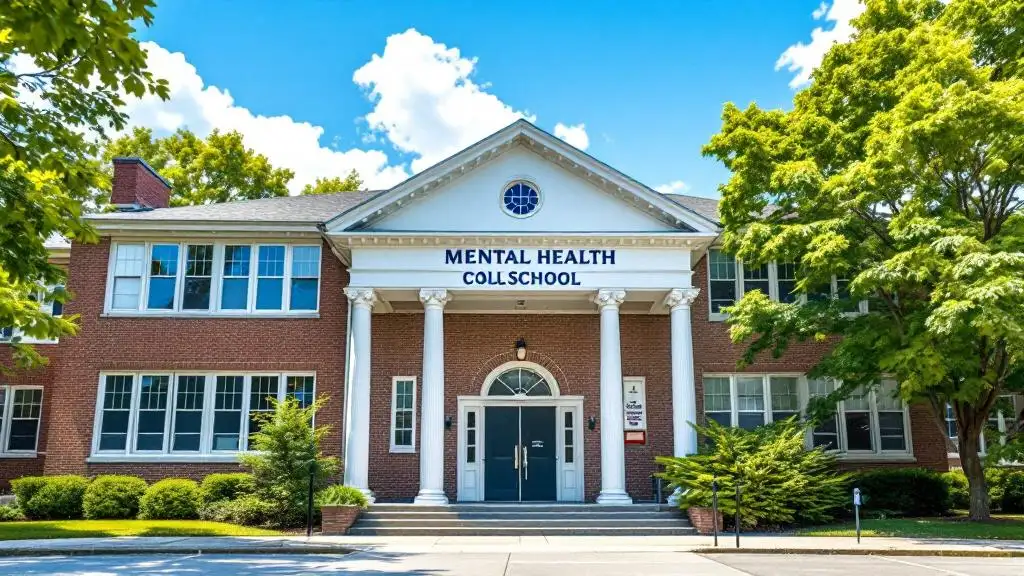Understanding the Power of Group Therapy During Midlife
Midlife ushers in a suite of emotional and psychological challenges, often accompanied by heightened anxiety. As individuals confront changes in career, family dynamics, health, and identity, they may find the support of group therapy to be a vital resource. Backed by clinical research and evidence-based practices, group therapy offers a supportive environment where individuals can explore their feelings, develop coping skills, and foster resilience. This article delves into how group therapy operates as an effective intervention for midlife anxiety, exploring various approaches, benefits, and real-world applications.
Overview of Group Therapy for Anxiety
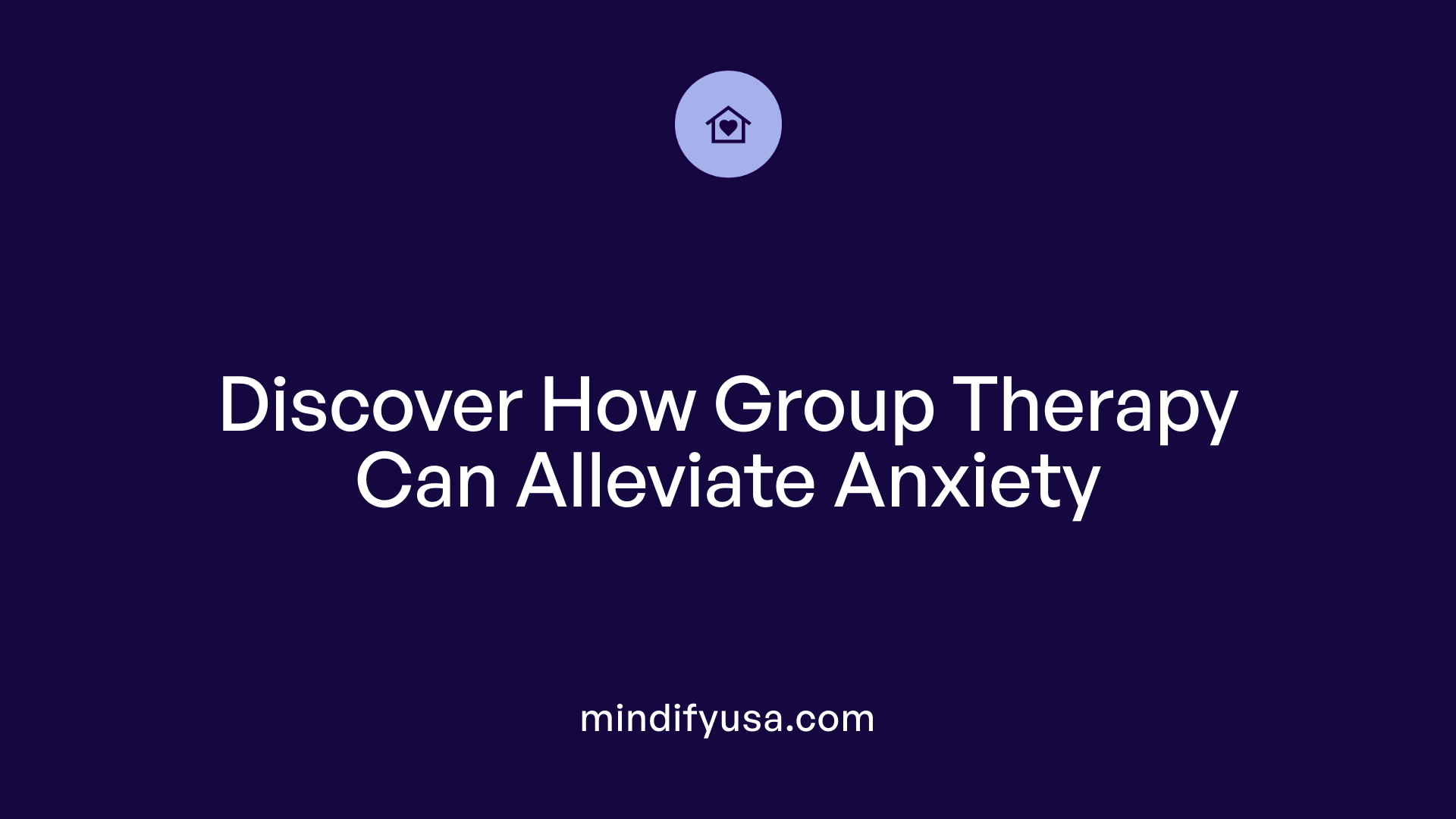
What is group therapy?
Group therapy is a form of psychological treatment where a trained therapist leads a small group of individuals dealing with similar issues. It provides a safe, supportive environment for members to share experiences, learn from one another, and develop coping skills. Different types of group therapy include cognitive-behavioral groups, psychodynamic, interpersonal, skills development, and mindfulness-based groups. These sessions typically focus on enhancing emotional regulation, fostering social support, and promoting behavioral change.
In settings such as NYU Langone Psychiatry Associates, expert psychologists and social workers facilitate over 30 diverse group programs. These include specialized groups designed to address specific conditions like anxiety, OCD, trauma, and emotional dysregulation. The format allows for peer interaction, which can accelerate recovery, increase motivation, and reduce feelings of isolation.
How does group therapy help with anxiety?
Group therapy can be highly effective for individuals struggling with anxiety disorders. It offers a platform for participants to share their experiences, normalize their feelings, and learn practical skills in a collaborative environment. One prominent approach, Cognitive Behavioral Therapy (CBT), teaches clients to identify and reframe negative thought patterns that fuel anxiety.
Another effective modality is Dialectical Behavior Therapy (DBT), which focuses on emotional regulation and distress tolerance. Support groups targeting specific issues like anxiety management skills or exposure therapy help participants confront fears gradually, building resilience and confidence.
Therapists also incorporate mindfulness techniques, somatic skills, and psychoeducation to enhance coping strategies. Through these methods, individuals can better manage their symptoms, reduce avoidance behaviors, and improve overall emotional well-being. The group setting additionally fosters a sense of community, decreasing loneliness and promoting shared growth.
Evidence supporting group therapy efficacy
Research consistently shows that group therapy is an evidence-based treatment option for anxiety and related conditions. Studies indicate that group therapy can be as effective as individual therapy, with benefits including cost-effectiveness and increased accessibility.
A range of scientific evidence supports various modalities used in group settings. For example, cognitive-behavioral group therapy has been demonstrated to significantly reduce anxiety symptoms, with many participants experiencing lasting improvements. Exposure-based groups, which help individuals confront fears in a controlled manner, show substantial success in lowering anxiety levels.
The American Psychological Association recognizes group psychotherapy as a specialized and effective form of treatment, validated by empirical research. Online group therapy formats, which have become increasingly common, also maintain strong efficacy and accessibility.
By fostering supportive peer relationships and providing structured skill-building exercises, group therapy effectively addresses the social and emotional aspects of anxiety disorders. Overall, it remains a vital component of comprehensive mental health care.
Specific Approaches in Group Therapy for Midlife Anxiety
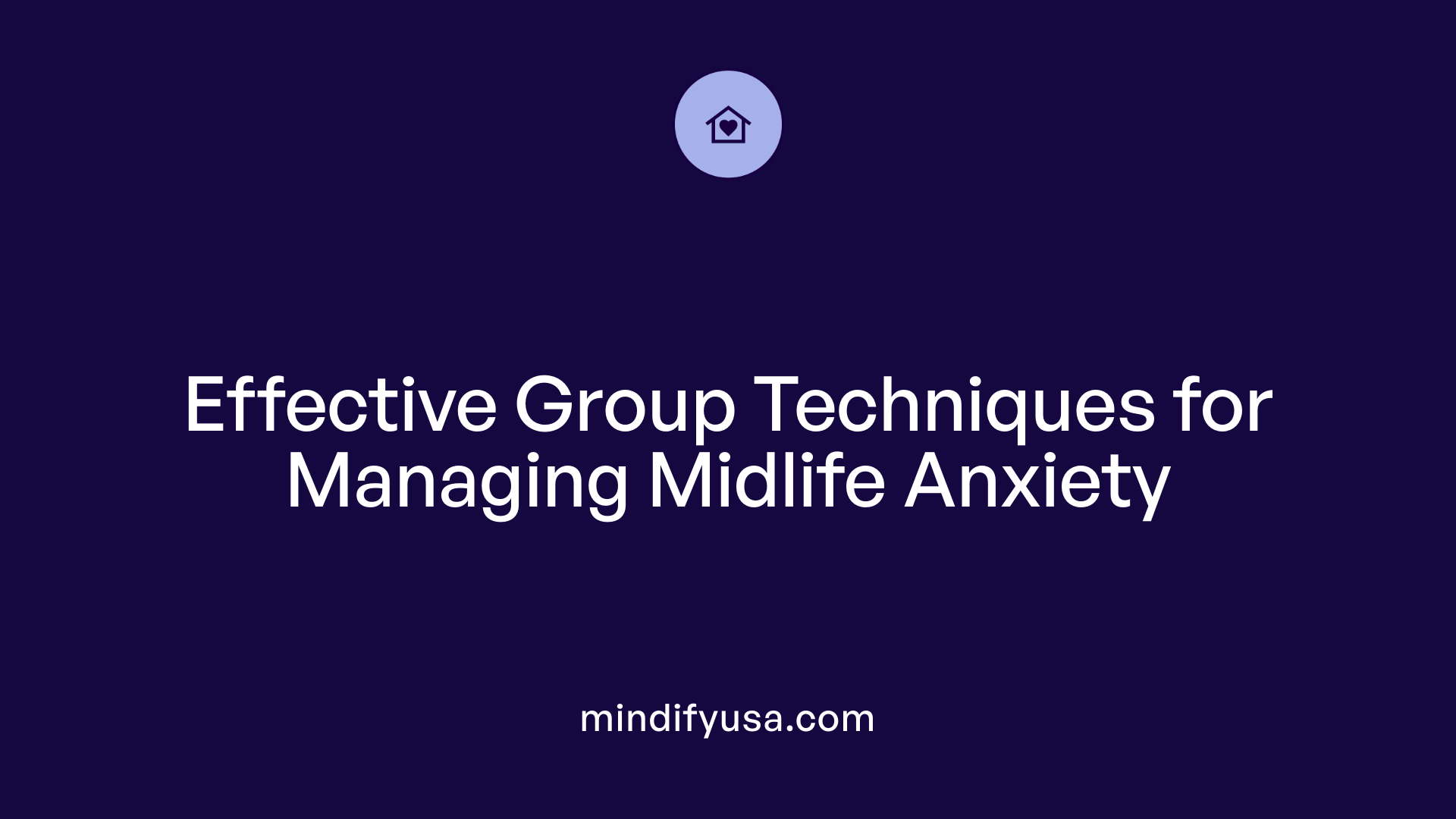
What types of therapy are effective for managing midlife anxiety?
Group therapy offers a variety of evidence-based approaches that are particularly effective for midlife adults facing anxiety. Among these, cognitive-behavioral therapy (CBT) stands out as a primary method. CBT helps individuals identify and reframe negative thought patterns, develop healthier coping strategies, and challenge maladaptive beliefs about aging, health, or life transitions. This approach empowers participants to manage symptoms like worry, irritability, and sleep disturbances more effectively.
Dialectical Behavior Therapy (DBT) is another valuable approach, especially in groups aimed at emotional regulation. DBT teaches skills in mindfulness, distress tolerance, emotional regulation, and interpersonal effectiveness, which are crucial for handling the emotional turbulence characteristic of midlife anxiety. It encourages acceptance while promoting change, helping individuals respond more adaptively to stressors.
Mindfulness-based techniques are seamlessly integrated into many group settings. These practices involve meditation, breathing exercises, and present-moment awareness, helping participants reduce physiological arousal and improve emotional resilience. Regular mindfulness practice can decrease overall anxiety levels and foster a calmer outlook.
How do these therapies specifically assist midlife adults?
Midlife is often accompanied by significant life changes—career shifts, aging, family responsibilities, or health concerns—that can trigger anxiety. Tailored group therapies address these specific stressors by fostering social support, normalizing experiences, and providing practical skills.
CBT for stress and mood disorders helps adults reframe worries about aging and discover realistic, positive perspectives on these transitions. It also teaches problem-solving strategies that are directly applicable to challenges like managing health issues or adjusting to new life roles.
DBT skills aid in emotional regulation, reducing impulsive reactions and Reactive mood swings that may occur during midlife upheavals. Mindfulness approaches help adults stay grounded amidst uncertainty, encouraging acceptance of natural aging processes and reducing resistance to change.
Support groups focusing on psychoeducation provide participants with scientific information about aging, health, and emotional health, demystifying myths and fostering a proactive attitude toward well-being.
What is the role of exposure therapy and psychoeducation?
Exposure therapy is used in group settings to gradually confront and reduce fears related to health, social situations, or aging itself. For example, individuals might be encouraged to speak about their fears in a safe, structured environment, gradually increasing their comfort level with anxiety-provoking topics. This process diminishes avoidance behaviors and builds resilience.
Psychoeducation is foundational in group therapy, providing participants with knowledge about anxiety, its physiological and psychological components, and evidence-based coping strategies. Understanding the science behind anxiety helps demystify symptoms, reduces stigma, and increases motivation to engage in therapeutic activities.
Together, exposure therapy and psychoeducation form a comprehensive approach: the former directly targets avoidance behaviors, while the latter enhances understanding and acceptance, laying the groundwork for meaningful change.
Summarizing Group Therapy Modalities for Midlife Anxiety
| Therapy Type | Focus | Specific Techniques | Benefits |
|---|---|---|---|
| CBT | Thought and behavior change | Reframing thoughts, behavioral experiments | Reduces worry, improves coping |
| DBT | Emotional regulation | Mindfulness, distress tolerance, interpersonal skills | Enhances emotional resilience |
| Mindfulness | Present-moment awareness | Meditation, breathing exercises | Decreases physiological anxiety |
| Exposure Therapy | Facing fears | Gradual exposure, systematic anxiety reduction | Builds tolerance, reduces avoidance |
| Psychoeducation | Knowledge empowerment | Educational sessions, myth-busting | Reduces stigma, increases engagement |
These approaches collectively offer a comprehensive toolkit for midlife adults to manage anxiety more effectively within a supportive group setting, fostering resilience, improving emotional regulation, and enhancing overall quality of life.
Benefits and Goals of Group Therapy in Midlife
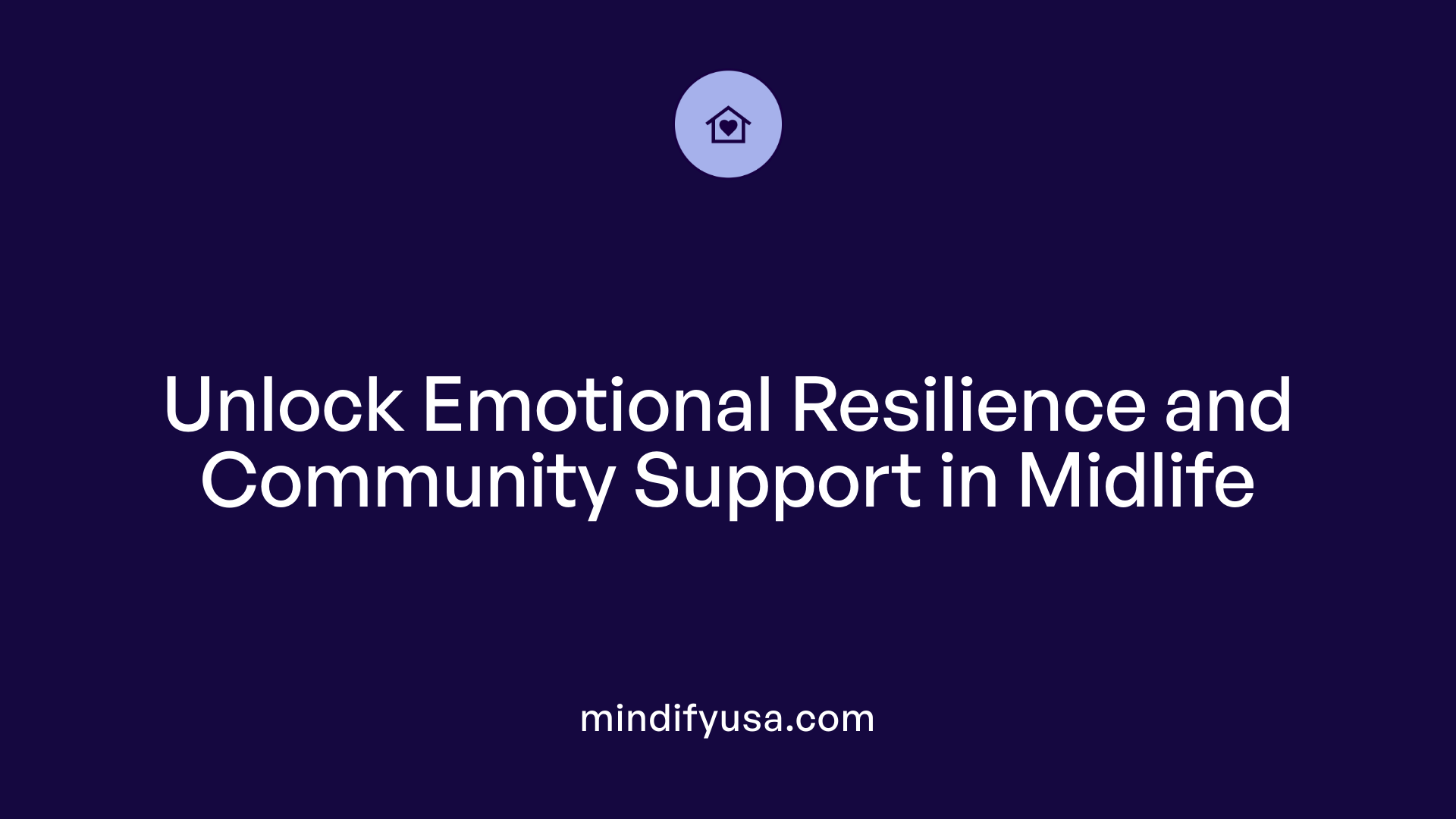
What are the benefits of group therapy for midlife anxiety?
Group therapy provides a supportive community for those navigating the emotional complexities of midlife. Participants find comfort in sharing their experiences with others who understand similar challenges, reducing feelings of loneliness and shame. This collective environment fosters a sense of belonging, which is vital during periods of significant life transitions such as aging, career changes, or relationship shifts.
Engaging in group therapy exposes individuals to a range of perspectives, offering new insights and validation. Honest feedback from peers and therapists encourages personal growth, boosting confidence and self-awareness. It also helps individuals identify and develop effective coping strategies tailored to their specific needs.
Furthermore, group therapy enhances accountability and motivation. Regular sessions encourage individuals to set practical goals and work actively toward managing anxiety symptoms and emotional regulation. It creates a safe space for practicing new skills, such as mindfulness, relaxation techniques, and communication.
Overall, participation in group therapy can transform feelings of anxiety into opportunities for resilience, self-discovery, and improved well-being, making it a powerful approach for addressing midlife emotional challenges.
Comparison of Group and Individual Therapy for Midlife Anxiety
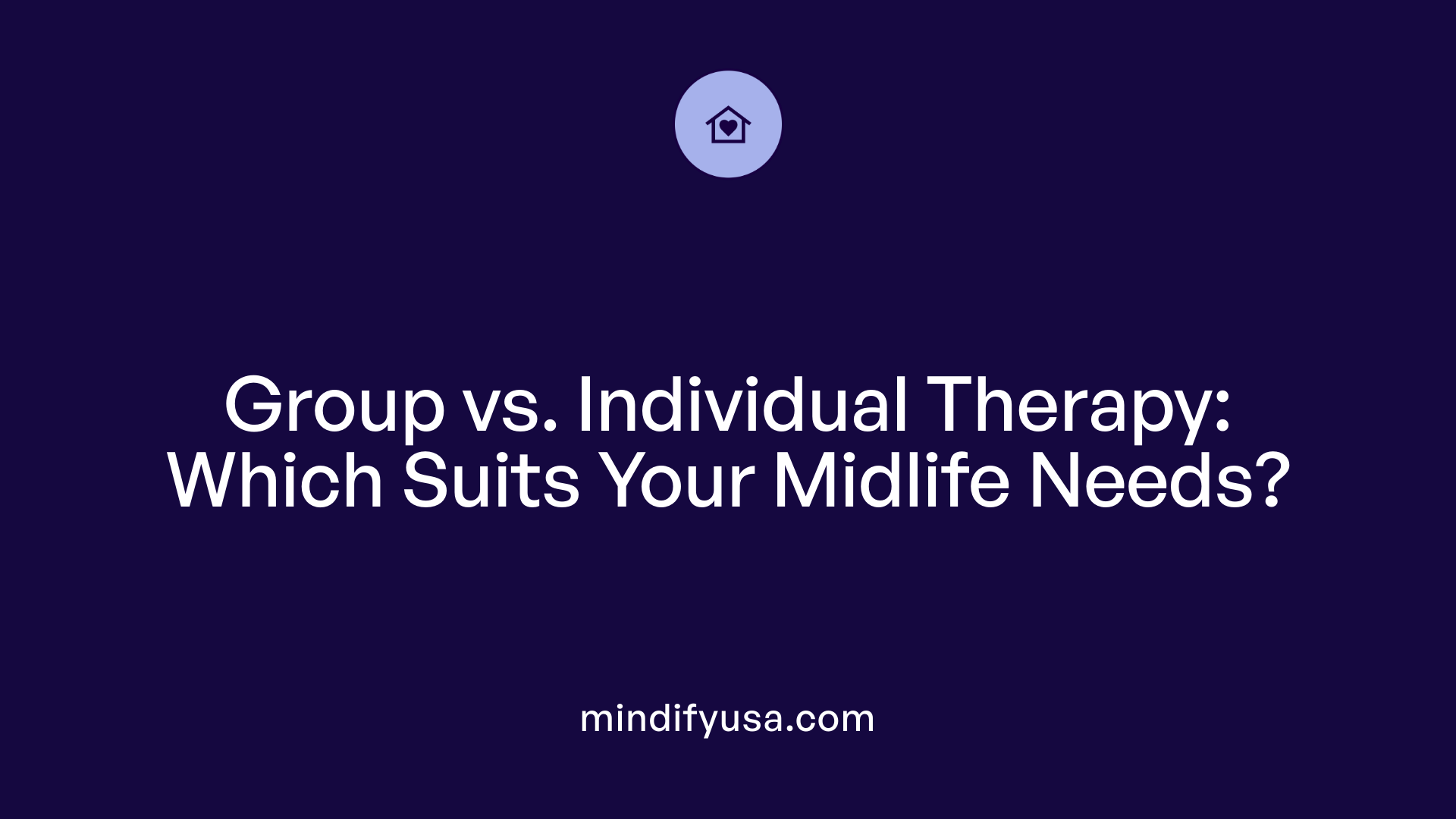
How does group therapy compare with individual therapy for midlife anxiety?
Both group and individual therapy are proven approaches to manage and treat midlife anxiety effectively. Research indicates that each method can produce comparable benefits, including significant reduction in anxiety symptoms and enhanced emotional well-being.
Group therapy offers distinct advantages such as peer support and shared life experiences. Participants often feel less isolated when they connect with others facing similar challenges, which can foster a sense of community and belonging. This mutual understanding encourages openness and active participation, making it easier to develop coping skills collectively.
On the other hand, individual therapy provides a highly personalized environment. It offers confidentiality and tailored treatment plans that address specific issues, including deep-seated trauma or complex emotional concerns. For individuals with severe anxiety or those who prefer a private setting, individual therapy can be especially beneficial.
While some individuals might find group settings intimidating or less suitable for their needs, others thrive in a collaborative environment. For example, midlife adults experiencing stress related to life transitions or identity shifts may benefit from the support and shared insights of group therapy.
In many cases, integrating both methods — a practice known as blended therapy — can offer comprehensive support. This approach combines the personal focus of individual sessions with the social and motivational aspects of group therapy. This dual format can leverage the strengths of each, leading to more holistic and sustained progress.
Advantages and disadvantages of each approach.
| Aspect | Group Therapy | Individual Therapy |
|---|---|---|
| Advantages | Peer support, shared experiences, cost-effective, enhances social skills, and reduces loneliness. | Personalized attention, confidentiality, tailored interventions, and deeper exploration of personal issues. |
| Disadvantages | Less privacy, potential discomfort sharing openly, culturally sensitive issues might be harder to address. | Higher cost, time-intensive, less opportunity for peer validation. |
| Disadvantages | May not address deeply personal or trauma-related issues sufficiently. | May lack peer support and social learning opportunities. |
Situations best suited for group or individual therapy
Group therapy is particularly effective when individuals seek social support, wish to learn from others, or face issues that benefit from a shared perspective, such as stress management, mild to moderate anxiety, or life transitions.
Conversely, individual therapy is better suited for complex, severe, or trauma-related anxiety that requires confidential, tailored interventions. It is also appropriate when the patient needs to explore sensitive topics that they may not feel comfortable discussing in a group.
Blended approaches and their benefits
Combining group and individual therapy allows patients to benefit from peer interactions and personalized treatment simultaneously. This approach can enhance motivation, provide diverse coping strategies, and create a comprehensive support network.
For example, a midlife adult might attend weekly individual therapy sessions to work on personal issues while participating in monthly group sessions aimed at building resilience and social support.
In summary, both group and individual therapies offer valuable tools for managing midlife anxiety. The decision depends on personal preferences, specific issues, and treatment goals. Often, a tailored combination provides the most robust support system for patients navigating midlife challenges.
Goals and Outcomes in Group Therapy for Middle-Aged Adults
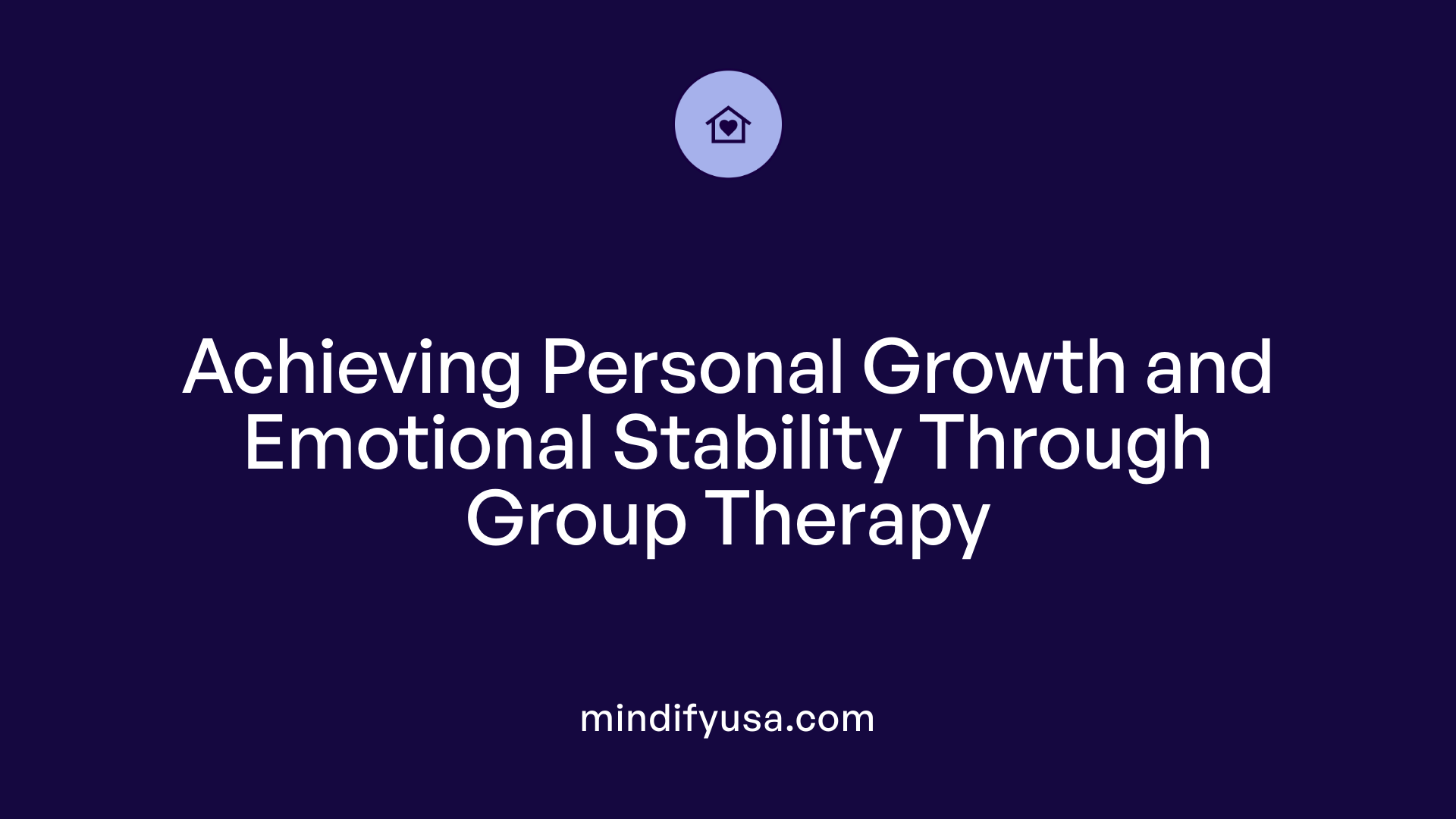
What are the goals of group therapy for midlife mental health concerns?
Group therapy for middle-aged adults often focuses on addressing common emotional and psychological challenges that arise during this life stage. One of its primary aims is symptom relief, particularly in reducing feelings of anxiety, depression, and emotional dysregulation. Many adults in midlife experience heightened stress related to career changes, aging, caregiving responsibilities, and shifting personal identities. Therapy provides a supportive environment where individuals can work toward managing these symptoms more effectively.
A crucial goal is to foster deeper self-awareness and insight. By exploring personal experiences and emotional responses within a group setting, clients learn to recognize patterns, triggers, and underlying beliefs that influence their mental health. This understanding can lead to meaningful personal growth and self-acceptance.
In addition to symptom management, group therapy emphasizes the enhancement of social skills and emotional regulation. Participants develop better ways to communicate, set boundaries, and express their feelings in healthy ways. These improvements contribute to stronger relationships and reduced feelings of social isolation, which are common in midlife.
Another significant goal is to promote hope, resilience, and a renewed sense of purpose. Midlife often prompts individuals to reflect on their achievements and unmet aspirations. Therapy offers a space to explore new interests, reevaluate priorities, and set realistic goals for the future. By fostering hope and resilience, group therapy helps individuals navigate transitions more adaptively.
Through various evidence-based techniques, such as Cognitive Behavioral Therapy (CBT), Dialectical Behavior Therapy (DBT), and mindfulness practices, the group aims to build adaptive coping strategies. These skills empower participants to face life’s challenges with greater confidence and clarity.
Ultimately, the benefits of group therapy extend beyond symptom relief. It helps middle-aged adults establish a sense of connectedness, belonging, and emotional stability, which are vital for overall well-being. By providing a secure and empathetic environment, therapy supports personal development and encourages positive changes that can lead to a more fulfilling midlife experience.
Empowering Change Through Collective Support
Midlife can be a period of significant transformation, often accompanied by challenges that provoke anxiety and emotional upheaval. Group therapy, with its foundation in evidence-based practices like CBT, DBT, and mindfulness, provides a structured yet compassionate environment for individuals to process these changes. Participants benefit from peer support, skill development, and shared insights that foster resilience and hope. When tailored to individual needs, group therapy can be a powerful tool—either stand-alone or combined with individual treatment—to facilitate personal growth, emotional regulation, and long-term well-being. Embracing group therapy as part of a comprehensive approach empowers individuals navigating midlife, turning moments of crisis into opportunities for reinvention and renewed purpose.
References
- Group Psychotherapy | NYU Langone Health
- Anxiety Support Groups in New York County, NY - Psychology Today
- Midlife Crisis - claritytherapynyc.com
- How to Recognize and Manage Midlife Anxiety - Colorado Women's ...
- Therapy in MidLife - BeWELL Psychotherapy
- Therapy for Midlife Crisis - Get 20 Mins Free Session | Click2Pro
- Midlife Crisis: Signs, Causes, and Coping Tips - HelpGuide.org
- The Modern Midlife Crisis - Roubicek & Thacker Counseling
- How to Deal With a Midlife Crisis: Coping Strategies and Aging
- Midlife Anxiety












